Omnichannel strategies help retain 89% of customers

The retail sector is changing, and the main reason for this is technological innovations. Some advocates of offline selling argue that digitization of the industry is not a beneficial aspect as it can lead to store closures. However, retail is simply following a natural change, adapting to new technologies and accompanying customers as they embrace e-commerce.
The fact is that 51% Americans prefer to buy online and that Millennial and Generation X consumers spend 50% more time browsing e-Commerces than Baby Boomers.
According to CNMC data, the first quarter of 2018 was the strongest in history, with more than 8.9 billion euros generated as a result of online commerce. This makes it clear that retail is not in decline, as dying industries do not improve their profits year after year.
It may require some flexibility and creativity, however, retailers have a wealth of options available if they want to modernize their business with innovative technologies over the next year. From augmented and virtual reality to social media, there are several digital solutions that will integrate seamlessly into any business.
Online stores evolve alongside physical stores
The scale of e-commerce is undeniably. One more year, Amazon has dominated the retail space, currently owns 5% of all retail spending both online and offline, so the leaders of physical commerce need to find a way to compete, quickly.
However, there are still several points, which make the physical sale not disappear. There are certain purchases that are still done better in person, especially if they are expensive. On the other hand, there is the purely personal aspect, the fact is that some people simply enjoy the act of shopping in a store. The in-person shopping experience will never go away; it will just become better.
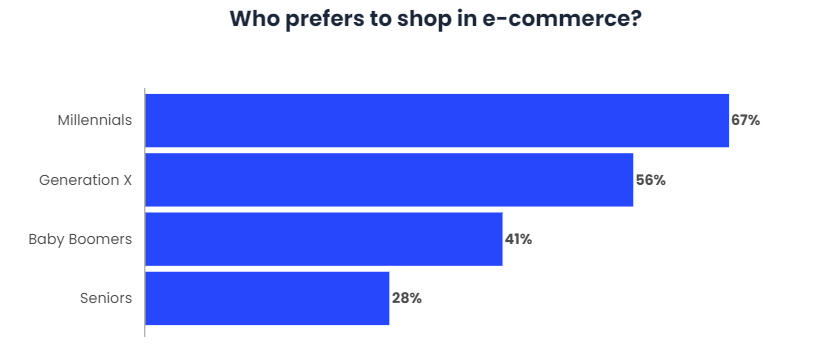
G2 Crowd expects that, over the next two years, the margin between e-commerce sales and in-store sales will increase by at least 5%.
The ability to enter a store and go out with the purchase will never go away, however, as consumers turn to e-Commerce to meet more everyday needs, physical store shopping will evolve into something more personal or luxurious. Which leads to the question of omnichannel.
Omnichannel strategies
Omnichannel has become a buzzword in the field of marketing in recent years. In many ways, omnichannel combines retail and marketing into a single entity for customers.
The ultimate goal of an omnichannel retail strategy is to direct customers from all channels to shopping. While one might assume that the two places of purchase are simply in the physical store or the web, omnichannel opens up a lot of crosses between the two. Since one customer can buy online and pick up their order in the store. Or buy on the web and send your order directly to your home.
This creates opportunities for stores to access a customer not once, but twice. Customers may be exposed to a brand more times, and the interaction between online and in-store offers can encourage that increase in engagement.
That creates a hotline from social media to sales, eliminating intermediaries and capturing customers while they’re already engaged. The possibilities are almost endless, as long as retailers have the tools and ingenuity to create them.
Companies that use omnichannel strategies retain an average of 89% of their customers, while companies that don’t have such strategies retain only 33%.
Increased overseas shipping
A good omnichannel strategy results in an expansion of sales and among them sales abroad. According to Idealo, in Spain up to 50% of the stores offer the possibility of shipping to other countries and 28% of them are available in several languages. In addition, up to 8% of them accept payments in a currency other than the euro. The increase in these percentages is partly due to the role of marketplaces and consumers.
The internalization of the platforms makes the purchase process more homogeneous and, the customer does not perceive large differences between purchases made in foreign e-Commerces or in those of their country.
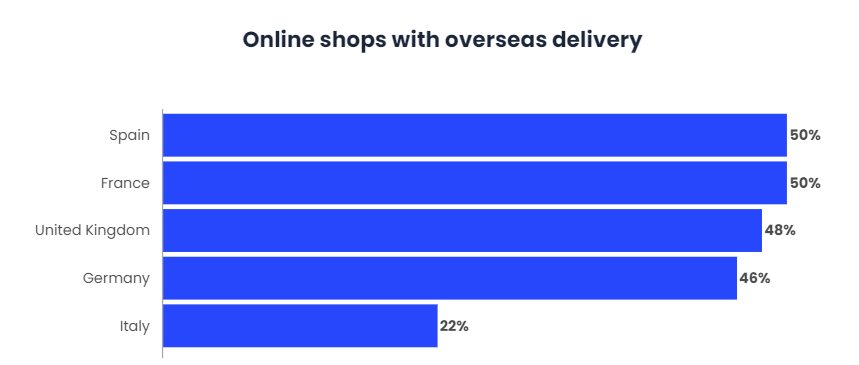
Some of these changes are also due to the new european Union rules. On 3 December, the new rules of the European Parliament which remove barriers to cross-border online shopping came into force.
This means that EU consumers will no longer be blocked or redirected to another website depending on their country of origin. And that sellers must offer the same conditions and prices to all consumers.
By eliminating unjustified geo-blocking, users will be able to access a much broader catalogue of online products and services, which will undoubtedly be a boost for cross-border e-Commerce.
Pricing strategies
At the height of the e-commerce boom and the removal of trade barriers abroad, increased competition makes it easy to break into the market.
By 2019, more and more stores are expected to focus on improving their pricing strategy, as it will be a critical aspect of earning consumer loyalty in the long run.
Price differences can help improve a store’s results, however, they are a double-edged weapon. If the strategy is not implemented properly, it can yield disastrous results and cause consumers to lose confidence in the brand.
Recently many users complained of suspicious price increases before stocks like Black Friday or the start of the rebate campaign. In fact at the beginning of 2018 FACUA published that up to 88% consumers had detected price irregularities prior to the start of rebates. Prices rose by an average of up to 4% before kick-off last summer sales.
Other trends to stand out
Competition between the various online stores aside, there are other factors that are expected to occur during the next 2019.
- The usability of the stores:
For any e-Commerce the most important step is the checkout, i.e. the closing of the sale. To encourage the shopping experience and prevent the process from being interrupted or completed before it has been completed, it is advisable not to take users directly to the shopping cart, but to leave them on the product page so that they are the ones who decide to finish the purchase.
In 2015, 46% of the stores sent users directly to the cart. In 2017, only the 28%. This figure, which has now been reduced to 10%, shows the direction in which stores are going and keeps waiting for this figure to continue to fall in the coming years.
For many consumers, data privacy remains a concern. Currently in a 48% stores registration is still mandatory. However,more than 50% of the e-Commerce already offers an alternative: either the social registration, or the purchase as a guest.
- The smartphone will be king, but the time has not yet come:
For users to have a satisfying shopping experience, they need to be able to browse the online store comfortably and, most importantly, from any device.
The weight of mobile devices is growing, there is no doubt. However, 2018 has not yet been the year of the coronation of smartphones within the world of e-Commerce.
Despite the increase in searches from smartphones, the largest number of purchases are still made from computers, which despite staying at the forefront of losing boom compared to 2017.
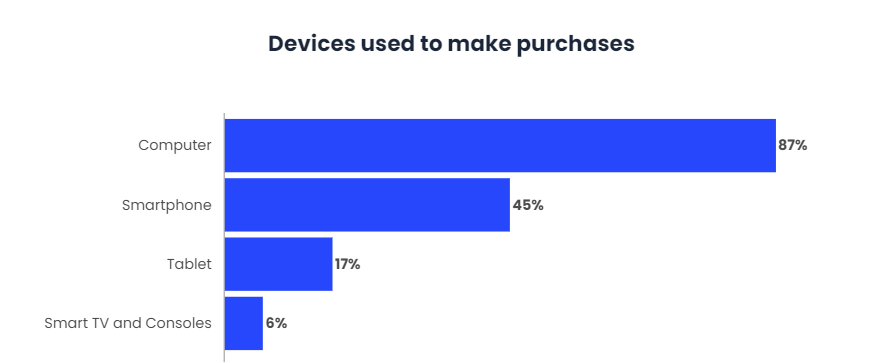
Why, in general, is the mobile not the main channel? Based on the results of a survey conducted from Think with Google, up to 93% of marketing and web development professionals consider the mobile site essential and up to an 80% believes that the speed and user experience of your website is equal to or better than that of the competition, something that might lead you to think that the quality of the browsing experience offered is overestimated.
Among the main barriers that professionals in the sector highlight when working on mobile navigation improvements, are:
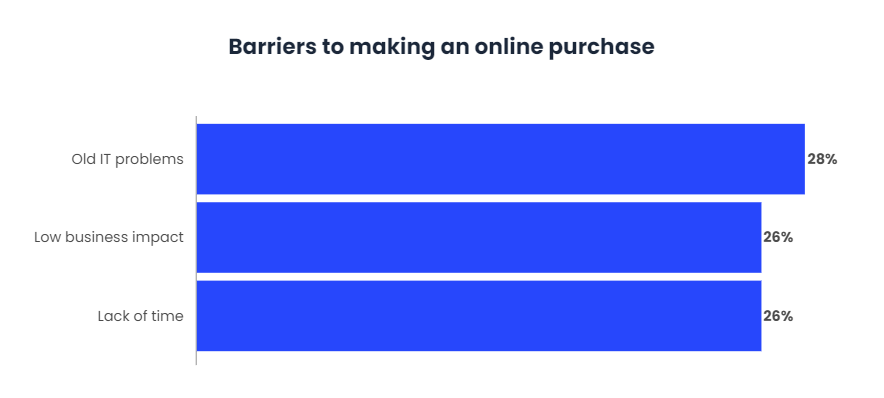
In order to avoid abandonment caused by the inability to correctly view e-Commerce through a mobile device and to ensure that users can enjoy a better mobile browsing experience, Google, along with other partners, initiated the Accelerated Mobile Pages project.
It is an easy-to-program and run open source technology that improves page speed and usability.
- Men continue to buy more through the web:
As for the user profile, men according to Idealo are more prone to online shopping with a 54.7% internationally. Although this data is very even in Spain where women with a 45.3% are more present than in any other country.
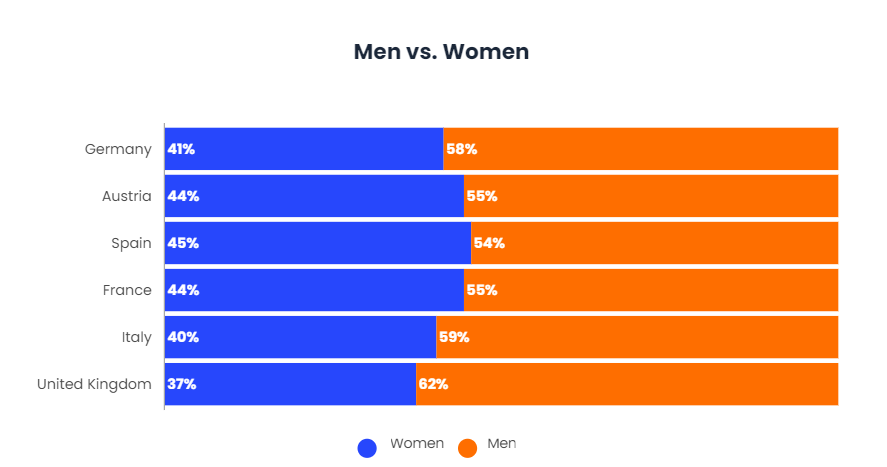
Specifically, the average buyer’s profile in Spain corresponds to a man between 35 and 44 years old who uses the smartphone to make his purchases online. Among the possible reasons for this preference are the products for which technology is mainly interested, one of the strongest sectors of e-Commerce.
Conclusions
As customers continue to feel more comfortable with multi-channel shopping, omnichannel sales strategies have become one of the key factors in the future shopping experience in both physical and e-Commerces.
Companies with omnichannel customer engagement strategies retain 89% of its customers average, compared to the customer retention rate of 33% for companies with weak commitment to the omnichannel customer.
The data show the fast-paced pace of online stores evolving to suit the needs of increasingly demanding consumers. However, 2019 will remain a year of change, most of which will be in the mood or revolved around mobile devices.


